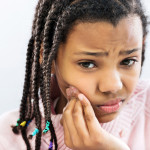The skin is the body’s largest organ and a critical first line of defense. When that defense is breached, your body is vulnerable to infections. Skin, hair and nail problems can be a sign that you have a health concern that affects other parts of the body.
Skin problems are common among HIV-positive and HIV-negative people alike, but people living with HIV are more prone to certain types of opportunistic skin disorders. Not all of these will require urgent care, but when in doubt, talk to your health care provider.
What causes skin problems?
The causes of skin problems are numerous and vary widely, from infections to malignancies. People with advanced HIV disease and a low CD4 count are more susceptible to skin problems due to opportunistic infections and cancers. Fortunately, these are less common in the era of effective antiretroviral treatment. Some examples include:
- Bacterial infections such as Staphylococcus aureus (called staph for short, or MRSA if it’s resistant to drugs), which can cause painful abscesses. Sexually transmitted bacteria, including syphilis, can cause sores or a rash. Bacterial infections may be treated with antibiotic creams or pills.
- Viral infections that cause skin problems include human papillomavirus (HPV), mpox (formerly monkeypox), molluscum contagiosum, herpes simplex virus (which causes oral and genital herpes sores) and varicella-zoster virus (which causes chickenpox and shingles). These can cause more severe manifestations in people with compromised immunity. Treatment may involve topical therapies, burning or freezing skin lesions or oral antiviral drugs.
- Fungal infections can affect not only the skin but the fingernails and toenails too. Athlete’s foot (tinea pedis) and candidiasis (thrush or yeast infection) are common among the general population. HIV-positive people with a low CD4 count may experience more frequent or severe outbreaks and are prone to other fungal infections that are rare among healthy people. Treatment may include antifungal creams or pills.
- Skin cancer can appear as oddly shaped moles, bumps or discolorations. Most types of early skin cancer can be removed with minor surgery, but melanoma can spread throughout the body and become life-threatening.
- Kaposi sarcoma (KS), caused by a herpesvirus, is an AIDS-related opportunistic cancer that usually occurs in people with a very low CD4 count. In some cases, starting antiretroviral therapy is enough to make KS lesions go away, or they may be treated with topical medications, surgery, radiation or chemotherapy.
- Psoriasis, an autoimmune condition caused by an overactive immune response, is characterized by scaly red patches, often around the joints or on the scalp. It is usually treated with prescription steroid pills or creams.
- Allergies can be triggered by foods, plants, drugs and chemicals. Skin manifestations may include a rash, hives (large bumps), redness, swelling and cracked skin. Allergies are usually treated with topical or oral antihistamines.
Can HIV medications cause skin problems?
Antiretroviral medications can sometimes cause skin side effects, which are usually mild to moderate. This is most likely to occur soon after starting a new drug and often resolves on its own within a few weeks. Skin rashes have been observed in a minority of people taking all widely used classes of antiretroviral drugs. The nucleoside reverse transcriptase inhibitor abacavir (in Ziagen, Epzicom and Triumeq) can cause a severe skin reaction in about 5% of people who have a mutation known as HLA-B*5701. A blood test can show who is at risk.
Health Skin Tips
- Cover nicks, cuts and scrapes with a bandage to help them heal and prevent infection.
- Stay on antiretroviral treatment to keep your immune system healthy and your CD4s high to prevent opportunistic illnesses.
- Don’t let bare skin touch moist surfaces, such as floors, benches and equipment in gyms or saunas, as this can transmit staph infection.
- Use sunscreen with an SPF of 30 or higher and wear long sleeves and a hat if you’re prone to sunburn. Stay out of the sun if you’re taking a medication that increases sensitivity to harmful rays (known as photosensitivity).
- Moisturize your skin with a good lotion, especially after showering.
- Keep track of the appearance of moles, warts and skin discoloration and take note of any changes.
- Tell your health care provider about any unusual skin changes or problems.
Last Reviewed: July 16, 2023














